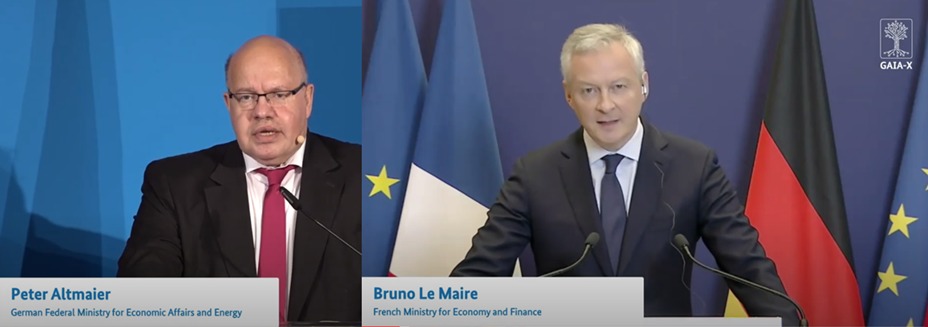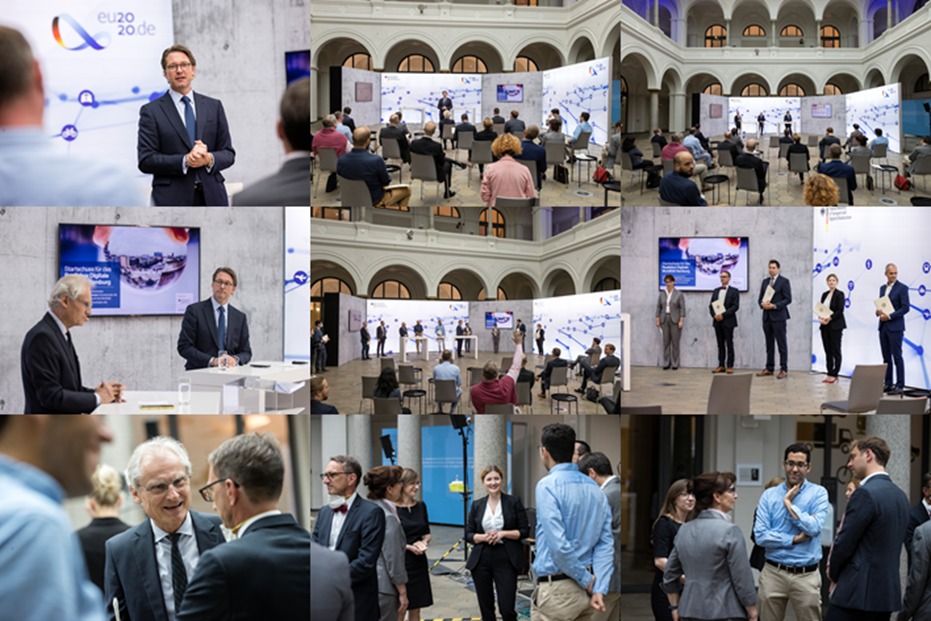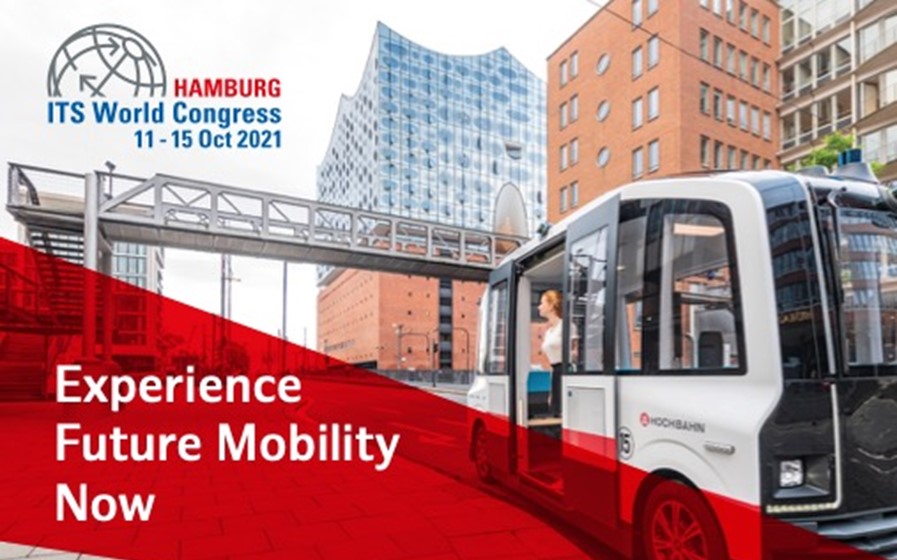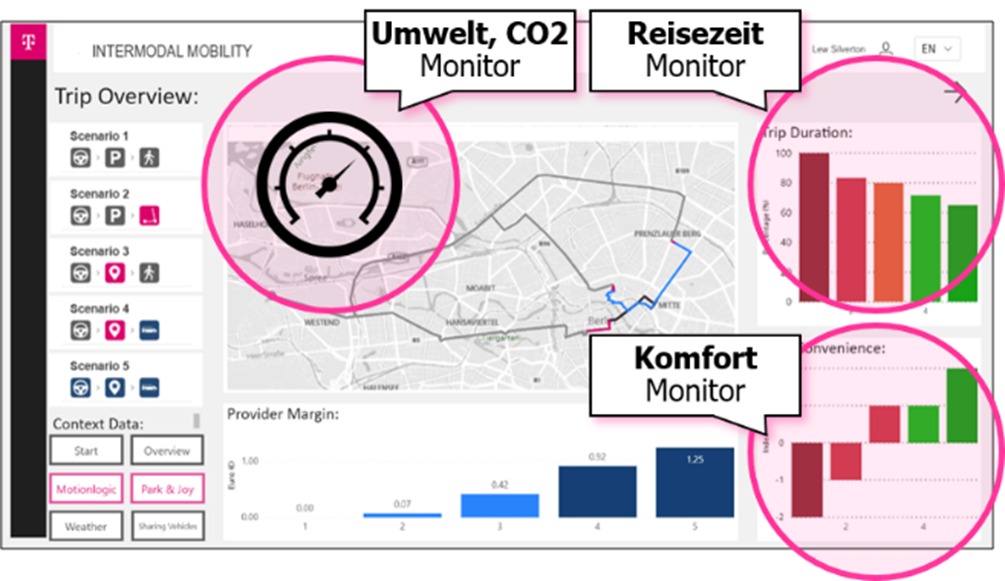Who would have thought it would happen so quickly? Just a few weeks ago, we reported on the metamorphosis from automotive to mobility (link) and how governments are taking a more active role in securing the vitality and the millions of jobs in this important sector of the European economy. And now you have already nearly missed it! New, future, or next mobility is happening.
Two ministers are launching Europe’s data space initiative
On July 15 Federal Minister Scheuer kicked off new mobility’s real-world laboratory, ReallabHH, with a ceremony at the ministry’s grand Erich-Klausener-Saal in Berlin. It was a mere three weeks after his colleague, Federal Minister Altmaier, together with his French counterpart, Le Maire, announced GAIA-X (link). GAIA-X will accelerate the much-needed buildout of data infrastructure in Europe to create “a secure, federated system that meets the highest standards of digital sovereignty while promoting innovation” (BMWi, link). Mobility will be just one part of this new data space, but a very important one at that. So how fitting that the National Platform Future of Mobility (NPM, link) has initiated the first real-world laboratory to pilot the intermediate results of its new mobility plan, which has a lot to do with data. Well, timing is everything, as they say.

Another minister is kicking of a mobility data space for NPM
The National Platform Future of Mobility or NPM was created by the German government just two years earlier with the aim of inviting all of Germany’s key automotive stakeholders to chart a new course from automotive to mobility (link). Since then, six working groups (WGs) have developed their first recommendations, all orchestrated under the leadership of Prof. Dr. Kagermann, who spent around ten years working as the CEO of SAP, Germany’s leading company based on market capitalization. One of the working groups, WG3 on digitalization, led by Mr. Klaus Froehlich, member of the Board of Management of BMW AG, responsible for development – and a real car (link) – proposed they stop talking and start doing, testing out the first recommendations in real life. This idea ultimately became Mr. Scheuer’s ReallabHH initiative.

NPM working group for digitalization
Fortunately, the Deutsche Telekom Data Intelligence Hub team was part of WG3, in Focus Group (FG) C on data & artificial intelligence, run by Niklas Veltkamp, an expert on digitalization and innovation and member of the board of management of Bitkom, Germany’s digital association, representing more than 2,700 companies of the digital economy (link). FG-C had been approaching data infrastructure from various angles for some time. The automotive industry had, for example, proposed a “NEVADA Share & Secure” or “neutral server” concept written under Graham Smethurst of VDA (Verband der Automobilindustrie e. V., German association of the automotive industry, link). In addition, the International Data Spaces Association, IDSA, had the opportunity to present its International Data Spaces (IDS) reference architecture model, RAM (Otto et al. 2019b).
Both Prof. Dr. Boris Otto and Lars Nagel, Deputy Chairman of the Board and the CEO of IDSA respectively, were given the opportunity to lay out just how IDS could enable a federated data space. So when Mr. Froehlich’s idea turned into proposals, we were able to suggest trying it out in a real-world scenario and kickstarting it by providing our IDS-based implementations, which included an “IDS_ready” connector (link).

RealLabHH: “Hamburg is putting the digital mobility of tomorrow to the test” (link)
Now 30 of the largest German companies and innovators such as BMW, Conti, Deutsche Bahn, DLR, Fraunhofer Gesellschaft, Moovel, SAP, Sixt, Swarco, Telekom, the three Technical Universities of Berlin, Hamburg and Munich (TU B/H/M), and the Urban Software Institute are part of the new real-world laboratory. It is located in Hamburg, Germany’s largest seaport and second largest city with a population of around 1.9 million. RealLabHH is run by Hamburger Hochbahn under the auspices of its CEO, Henrik Falk. The choice of Hamburg is no surprise – the city is a hotbed of mobility innovation, for one thing. “Hamburg has developed into a hub for intelligent, future-oriented mobility solutions” (press release, HH-Hoch 2020, link (in German)).
Examples include early autonomous vehicles, such as shuttles (Heat) and subways (U5). Another reason is that, thanks to its mobility innovations, Hamburg will be hosting the 2021 ITS World Congress, the world’s largest congress for intelligent transport systems (link). It was therefore convenient and fitting to use the ITS World Congress as a platform to present the RealLabHH’s results: “The RealLabHH takes it to the next level,” says Henrik Falk (press release HH-Hoch 2020).
Using IDS to bring the “N” in NPM to RealLabHH
The one concern of any trial or pilot is being able to generalize the results. Consider a sample for a survey: we want to make sure that it is representative so the results will properly reflect the conditions of the larger population. With a pilot, it is important to ensure that findings and benefits are not limited to the pilot’s footprint, i.e., Hamburg, but can be generalized and applied to other regions in Germany, like Berlin and beyond. This is where IDS comes in. The International Data Spaces (IDS) technology blueprints could be a solution.
Naturally, there are nearly always many different ideas, concepts, and methods for how to get somewhere and we would hope that all lead more or less to the same destination. IDS has certainly started from a diverse set of research institutes. By now, IDSA and its more than 100 members have refined it into a standard, DIN Spec 27070 (link). It uses open technology and the first implementations are available. This is where the Deutsche Telekom Data Intelligence Hub comes in with its expertise of implementing IDS (link).

Kickstarting the first “Mobility Data Space” prototype powered by IDS
Deutsche Telekom is an active participant in RealLabHH. One project is examining the national aspect of the NPM initiative and aims to show how the new IDS data standard can help to enable new, sustainable mobility offers that require interaction between many different mobility service providers and platforms. A demonstrator is planned for this purpose consisting of two key components: one visible and one hidden component, that is, hidden from an end user’s point of view. The visible component is an app with a new mobility offer for selected citizens in Hamburg (Figure 4 depicts the first illustration). The second component is the data layer beneath the app that makes the offer possible in the first place. The app will offer true intermodal trips from point A to point B across different modes of transportation: use your car, park it near a train station, board a train, exit the train, hop on an electric scooter and ride to your destination.
Intermodal mobility is exciting because it is an asset-light business concept, which “on average gets a better return on investment” (Kachaner & Whybrew 2014). Think Uber: the cars have already been purchased by drivers; all that is left is the orchestration of existing elements into a coherent service offering. For this to happen and in order to make it easy to use and seamless for the end user, different and often competing parties have to come together and share their data. This is where IDS standards will be employed to ensure that data can be shared such that the data sovereignty of the data suppliers is guaranteed.
This project is a joint endeavor of Deutsche Telekom and the Urban Software Institute, [ui!] (link). [ui!] is an expert in smart cities, founded by Prof. Dr. Lutz Heuser, former head of research at SAP – Lutz is also an alumnus of TU Darmstadt, like the author, and both of us are and have been professors at our alma mater. The project will benefit from [ui!]’s expertise with customer-facing apps (see, for example, its Bad Hersfeld UrbanPulse city cockpit, link) while Deutsche Telekom can contribute IDS and mobility analytics competence.
Please check out our “Mobility Analytics” series, which reveals how data is transforming automobility and how it can actually be used for competitive advantage using simulations and our Berlin digital twin: microsite (link) with Mobility Analytics #1 – #5 (link).
References
Federal Ministry for Economic Affairs and Energy. 2020. Peter Altmaier and Bruno Le Maire present the European data infrastructure project GAIA-X. (June 4), link
Hamburger Hochbahn. 2020. Startschuss für RealLabHH: Hamburg erprobt die digitale Mobilität von Morgen im Alltag. Press release (July 15), link
ITS World Congress. 2020. ITS Congress highlights 2021, link
Kachaner, N., and A. Whybrew. 2014. When “Asset Light” Is Right. Boston Consulting Group (September 30), link
NPM. 2020. Launch of RealLabHH: Hamburg is putting digital mobility of tomorrow to the test. Press release (July 15), link
NPM. 2020. User-friendly design of mobility services through platform-based, intermodal solutions. Press release (July 16), link
Otto, B., S. Steinbuß, A. Teuscher, and S. Lohmann. 2019b. Reference Architecture Model Version 3.0. International Data Spaces Association (April), Dortmund, link
Schlueter Langdon, C. 2020. Quantifying intermodal mobility: A parsimonious model and simulation.Working Paper (WP_DCL-Drucker-CGU_2020-06), Drucker Customer Lab, Drucker School of Management, Claremont Graduate University, Claremont, CA, link



